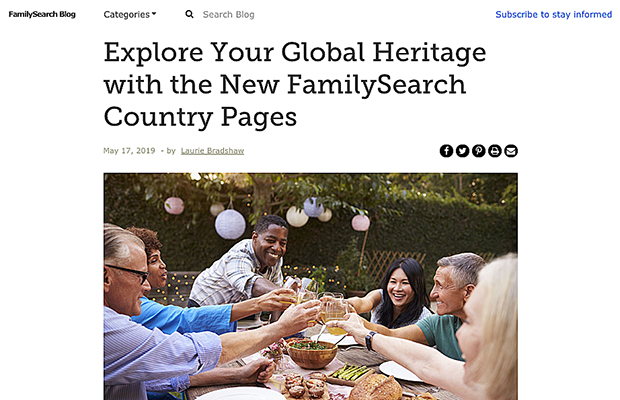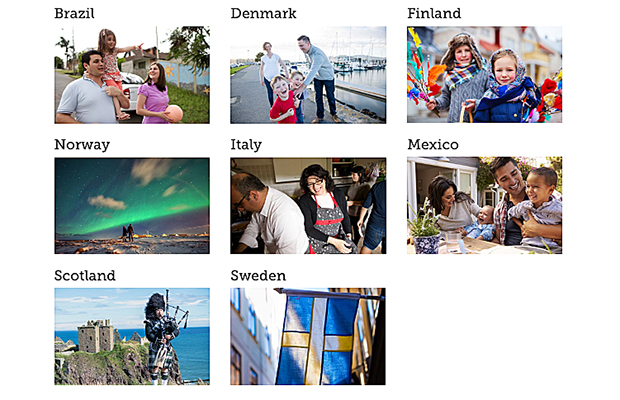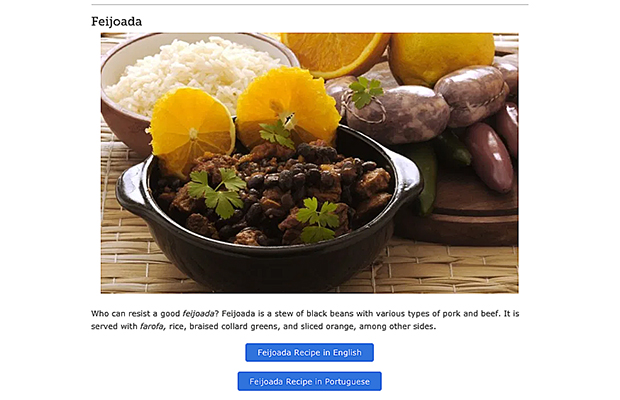Learn More about Your “Homeland” with FamilySearch Blog Country Pages
Contributed By Sydney Walker, Church News staff writer

FamilySearch is creating country hub pages with resources specific to a country, including historical background, record collections, and tips for understanding research. Photo courtesy of FamilySearch.org.
Article Highlights
- Blog country heritage pages help you place yourself in the shoes of your ancestors, interact with the area your ancestors are from, and learn how to add them to your family tree.
“It’s creating relationships with people that care about you and that matter to you because that’s where your story began. It began with your ancestors. . . . They are just waiting for us to connect with them.” —Angelica Lopez, FamilySearch marketing coordinator
Related Links
Maybe you know the seven generations of your family that go back to a small town in Italy. Or maybe the only thing you know about your heritage is that you have an Italian last name.
With the new blog country heritage pages, FamilySearch wants to reach people wherever they are and provide fun, engaging experiences while they learn more about where they came from.
“It doesn’t matter where you’re at in your discovery journey to connect with your ancestors,” said Angelica Lopez, a FamilySearch marketing coordinator. “We want to make it personable and very easy and intuitive and simplified so you can create those connections in under five minutes.”
Over the past several months, FamilySearch has been working on a new blog content strategy—called the “homeland” strategy—to create a setting for people to “place themselves in the shoes of their ancestors,” Lopez said.
Part of this strategy includes creating hub pages of information with resources specific to each country, including historical background, record collections, and tips for understanding research.
Take Italy, for example. The Italian heritage page features articles on Italian emigration, Italian last names, Italian dual citizenship, and how to find and use Italian records. There is also a link to the Italy research page, which is a collection of tools such as learning courses, indexing projects, image-only records, and catalog material specific to Italy.
In addition to Italy, FamilySearch has published country pages for Brazil, Denmark, Finland, Norway, Mexico, Scotland, and Sweden—with more to come.
Courtney Connolly, a FamilySearch product marketing manager, explained, “The content we put on these pages helps people learn different ways that they can interact with that area where their ancestors are from, which we call ‘homeland.’”
There are also a lot of visual elements and graphics to help illustrate the information on the country pages, she said.
Laurie Bradshaw, who edits and publishes for the FamilySearch blog, oversees the supporting content found on the country pages. “We want people to really feel like they’re connected to their heritage,” she said. “We really want there to be something for everybody.”
Bradshaw said they approach each “homeland” from several different angles. What is the country’s history? What food did they eat? What were the traditions? What did their names mean?
On the Brazil page is an article about Brazilian recipes. An article about Mexican traditions can be found on the Mexico page. The pages for Denmark, Norway, and Sweden include information about the patronymic naming system (children taking on a form of their father’s first name instead of last name, such as “Johnson” or “Hansen”).
“We do fun articles on things like recipes and heritage . . . because those are the things that the largest group of people are interested in,” Bradshaw said. “We then introduce them to the world of information found in a country’s historical records online at FamilySearch or encourage them to share their own family heritage stories and memories. Oftentimes, those are the things that draw people in and really get them thinking about it.”
Lopez said the purpose behind the content on the country pages is to provide “a starter pack” to connect people with their ancestors and learn how to add them to their family tree.
“It’s providing context that creates a person, not just a name on a record,” Lopez said. “It’s creating relationships with people that care about you and that matter to you because that’s where your story began. It began with your ancestors. . . . They are just waiting for us to connect with them.”
Just five minutes, a desire to learn more, “and you can do it,” she said.

FamilySearch is creating country hub pages with resources specific to a country, including historical background, record collections, and tips for understanding research. Photo courtesy of FamilySearch.org.

Italy research page on FamilySearch.org. Photo courtesy of FamilySearch.org.

On the country heritage landing page, patrons will find pages for Brazil, Denmark, Finland, Norway, Italy, Mexico, Scotland, and Sweden—and more to come. Photo courtesy of FamilySearch.org.

On the Brazil page, patrons will find an article about Brazilian recipes, including the popular dish feijoada. Photo courtesy of FamilySearch.org.
